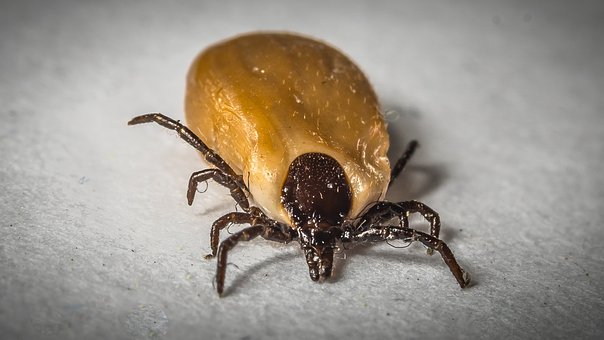
Are we having a Tick Apocalypse?
If you thought you were safe from Lyme disease because you don’t live in New England, where the tick-borne illness first appeared, think again.
Now, all 50 states plus the District of Columbia have residents who have tested positive for Lyme,
a bacterial infection that can cause a wide variety of symptoms, including joint aches, fatigue, facial palsy and neck stiffness.
This news comes from a report from the clinical laboratory Quest Diagnostics. Quest analyzed the results of 6 million blood tests doctors had ordered to diagnose Lyme disease in their patients. The report found that Pennsylvania had the most positive cases last year: 10,001.
The Pennsylvania tally, along with that of the six New England states – Connecticut, Maine, Massachusetts, New Hampshire, Rhode Island and Vermont – accounted for about 60 percent of the country’s Lyme disease cases.
Positive results grew by 50 percent in New England and by 78 percent in Pennsylvania from 2016 to 2017.
However, the number of positive tests spiked in some areas not traditionally linked to Lyme disease. Florida, for instance, had 501 infections, up 77 percent since 2015. California had 483 people with positive test results – a 194.5 percent increase from 2015.
** Lyme disease is now THE MOST commonly reported vector-borne illness in the United States. In 2015, IT WAS THE SIXTH most common Nationally Notifiable disease. **
And as if this wasn’t scary enough…
A new tick species has been found in Maryland. It gorges on so much blood it kills itself, and lays up to 2,000 eggs at one time.
An Asian tick capable of reproducing at remarkable speed and gorging on so much blood that it kills itself has been found in Maryland. It’s the first new species of tick to be found in the United States in 50 years, the New York Times reports.
The long-horned tick was first found on a white-tailed deer in Washington County in June and was confirmed on July 27, state health officials said.
“In order to keep livestock and pets safe,
owners are encouraged to check their animals for a high concentration of tick bites or abnormal ticks,” said the Maryland Department of Agriculture’s State Veterinarian Dr. Michael Radebaugh.
This species of ticks are known to cling to hosts in high numbers. If too many of these ticks attach themselves to an animal, it could cause stunted growth, decreased production, major blood loss, and has the potential to spread diseases.
In Asia, the species carries a virus that is fatal for 15 percent of its victims. No human disease has yet been found in the insects discovered in the U.S.
Female long-horned ticks can lay 800 to 2,000 fertile eggs at one time without mating once it feeds on a host, the health department says. The long-horned tick — also called the bush tick — feeds on livestock, poultry, wild birds, pets, small mammals and humans.
This tick species is easily mistaken for other common ticks found in Maryland. Hard to see with the naked eye, the brown-colored tick has distinctive “horns” that can be viewed under a microscope.
Ticks are usually found in tall grasses, meadows, pastures and wooded areas.
Safely protect your livestock and pets from tick bites by using Ticks-Off.
Disclaimer: Ticks-Off, nor any third party associated with, related to, or linked to their businesses or websites, expressly disclaims any responsibility for, and makes no representations or warranties regarding, any statement, information, materials, or content found on or included in Ticks-Off’s marketing materials/websites, or any third party marketing materials/websites related to, associated with or linked to Ticks-Off’s business or website. Ticks-Off’s website and blogs are not intended to diagnose or treat any health conditions. They are meant solely for informational purposes. Please seek veterinary advice for any health concerns or problematic conditions. These statements have not yet been approved by the FDA.

